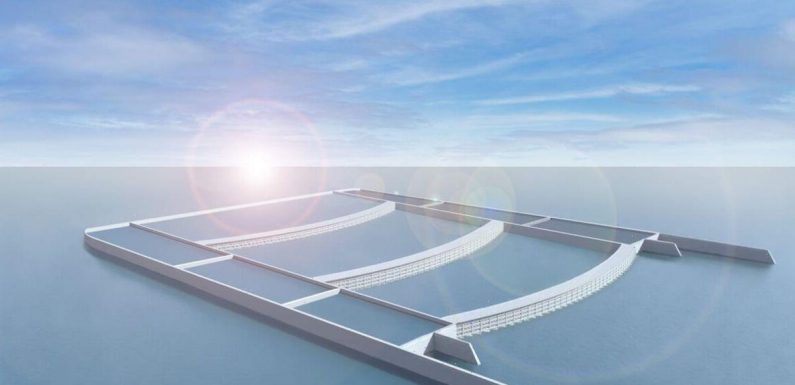
Energy bills: Couple discuss the increase in their prices
We use your sign-up to provide content in ways you’ve consented to and to improve our understanding of you. This may include adverts from us and 3rd parties based on our understanding. You can unsubscribe at any time. More info
The UK has a unique, untapped resource, that experts believe is the “only solution” to tackling the energy crisis over the long term, Express.co.uk was told. Over the past year, the country has been scrambling to end its reliance on gas, by accelerating the development of more renewable energy like wind and solar power. Aside from helping fulfil the UK’s climate ambitions, renewables have also helped end the country’s reliance on expensive natural gas imports, boosting energy independence. This investment has already begun to pay, with the UK so far generating electricity more from renewables this winter than it did from gas, between October 1 and January 13.
Despite this massive scale-up in renewables, critics have warned that both wind and solar energy are intermittent, meaning during days when the wind isn’t blowing and the Sun isn’t shining, power output could drop drastically, even sparking blackouts.
According to Stuart Murphy, founder of tidal range energy system TPGen24, that is almost exactly what happened between November 28- December 16 last year, when wind speeds were very low. As a result, the UK had to ramp up its gas-fired power plants to make up for the renewables shortfall.
He told Express.co.uk that wind and solar alone cannot serve as the UK’s baseload power, which is the minimum amount of electric power needed to be supplied to the Grid at any given time.
He said: “There’s a lot going on at the moment, and we believe we have the best solution in the world for renewable energy. Only tidal range provides base load, and can produce power from a single site 24/7. TPGen24 is the only real solution.”


TPGen24’s plant comprises three central, tiered lagoons. Each one is separated by a dam, loaded with 10,000 vertically stacked turbine units, bookended by smart-controlled sluice gates.
Water passes through the turbines, turning the blades as the tide rises and falls, generating energy. Mr Murphy noted that his plants will be able to generate energy from both the rising and receding tide, thus being able to provide electricity throughout the day.
TPGen24 says that each plant in its design is 15km by 7.5km, positioned at least 1km offshore, minimising its environmental impact on the coastline, while the steel-reinforced concrete structure will last for centuries.
He previously said: “A single plant alone can generate enough electricity to power 800,000 homes or recharge up to 10 million electric cars a year, just through utilising the power of the world’s tidal ranges.”


Mr Murphy noted despite its cost, nuclear power is “a good low-carbon transitional fuel to get us weaned off fossil fuels”, however it lacked the flexibility needed to support wind and solar when power output drops.
He said: “Unless we have a fossil fuel replacement base load, and a renewable baseload tidal system, I can’t see us getting off fossil fuel by 2050.
“The thing about replacing gas and coal is that you can’t use nuclear to replace them because we had a wind drought between November 28- December 16 last year.
“So on the 28th of November, we had 3.8GW coming out of all the nuclear power stations, and it took until the 18th of December to get up to 5.9 GW, rising incrementally. Meanwhile gas and coal generation are going up and down all day to maintain the power output around intermittent renewables and demand.”
DON’T MISS:
Botched Virgin Orbit launch went ahead despite staff warnings [REVEAL]
Electric vehicle boost as major new UK battery site announced [INSIGHT]
Britishvolt collapse ‘not surprising’ but deeply concerning [ANALYSIS]

He noted that TPGen24’s sites work when the tide is rising, when it is at its peak, when the tide is receding, and it is at the bottom, giving the plant four different cycles.
He continued: “That gives us 24-hour power generation. If we repeat this over 100 kilometres, and put six of them in there, we could generate enormous amounts of power 24 hours a day.
“The same thing in the Severn Estuary, we have an enormous amount of power, and we have a higher tidal range there. We have some of the greatest tidal ranges over thousands of square kilometres anywhere on the planet, and it’s not being used today.”
This kind of flexibility would ensure that the sites would constantly provide power to the UK’s electricity networks, and thus helping ease the strain on the National Grid during peak times, and when wind and solar generation is low.
Source: Read Full Article